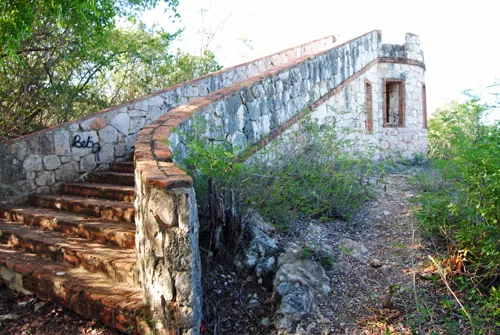1. Overview of Guánica State Forest
Located in the southwest corner of Puerto Rico, overlooking the tranquil Guánica Bay, the Guánica State Forest spans 9,000 acres and ranks among the largest tropical dry coastal forests in the world. This unique area represents Puerto Rico’s most arid land, with minimal rainfall throughout the year, providing a stark contrast to the lush El Yunque subtropical rainforest.
2. The Unique Ecosystem
The bosque seco, or dry forest, is a xerophytic forest that is home to hundreds of plant species, including numerous cacti, spiny bushes, and resilient trees. Additionally, the forest hosts more bird species than the aforementioned El Yunque, along with several reptilian and amphibian species, creating a landscape of stark and dramatic beauty.
3. Why Visit Guánica Dry Forest?
Due to its unique climate and native flora and fauna, Guánica Dry Forest has been designated a United Nations biosphere reserve. It serves as a perfect day trip from San Juan, making it a highly recommended attraction for those exploring the southern part of the island. Discovering this remarkable ecosystem is undoubtedly worthwhile.
4. Getting to Guánica State Forest
To reach the forest from San Juan, take Expressway 52 south to Ponce. Next, follow Route 2 westward to Route 116 before taking Route 334 to the forest. A welcome sign at KM 6 on Route 334 will indicate your arrival. It typically takes about two hours to drive from San Juan and less than thirty minutes from Ponce.
5. Planning Your Visit
The forest operates from 9 am to 5 pm, and entry is free. Start your journey at the welcome center, where you can find a park ranger, trail maps, and restroom facilities. It is essential to wear a hat, generously apply sunscreen, and carry plenty of water as you will be navigating a hot, dry environment with trails that range in difficulty from easy to challenging. Dress appropriately to ensure your comfort!
6. Exploring the Forest: What to Do
Several trails wind through this stunning forest. Dedicate a full day to capturing all that it has to offer. The most popular and longest trail is the four-mile trek to the historical ruins of Fort Caprón. This wide trail, almost like a road, is easy to navigate. Depending on your visit’s timing, the forest may appear lush during the wet season or exhibit a skeletal ambiance of bare trees and shrubs. Along your hike, enjoy the serenade of birds and observe the large cacti and lizards in the underbrush.
7. Fort Caprón: A Historical Insight
The remnants of the fort consist mainly of a lookout tower, with nature reclaiming most of the site. While it didn’t see substantial action, it did face the first U.S. soldiers who invaded Puerto Rico during the 1898 War with Spain. A narrow stairway leads to the tower, offering sweeping views and a refreshing breeze. Visitors can also enter the tower, which has accumulated graffiti over time.
8. Alternative Access to the Forest
If the full four-mile hike to the tower is not feasible, consider this tip: Continue on Route 334 past the forest entrance. After passing Jaboncillo Beach, an old water tower will appear on your left. A hidden entrance to the forest lies just beyond this landmark that’s perfect for parking a car or two, providing access to a narrow, unmarked trail that leads to the forest and can save you some hiking time.
9. Additional Trails and Attractions
The fort trail is one of several routes in the forest. The Ballena Trail is relatively shorter and leads down to Ballena Bay, where you can find a side trail leading to a centuries-old Guayacán tree. Other trails explore natural caves and the stunning coastline.
10. Concluding Your Day at the Forest
After an exciting day in the forest, unwind at one of the coastal beaches. Treat yourself to a well-deserved gourmet dinner at local restaurants like Alexandra or Las Palmas, or consider spending the night at the Copamarina Beach Resort.





